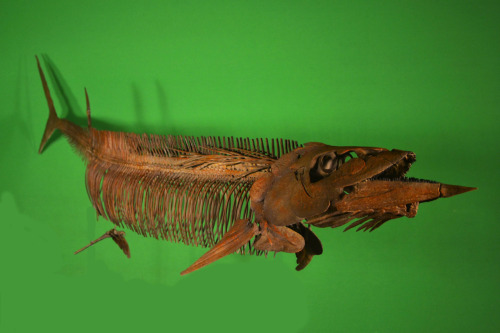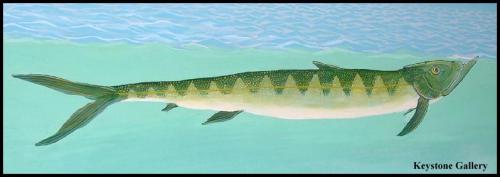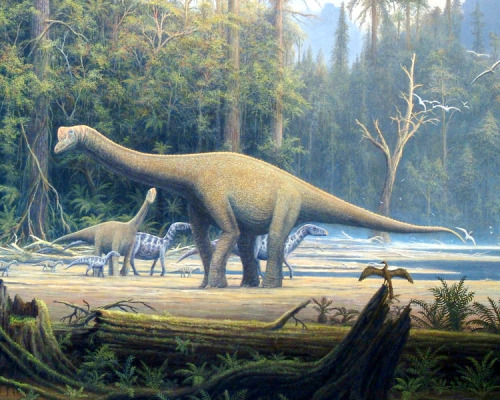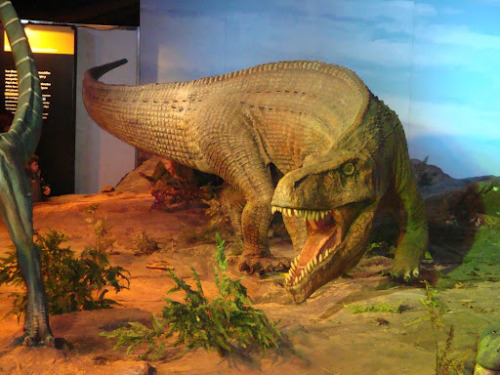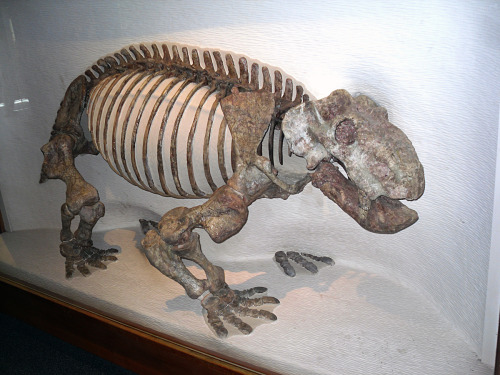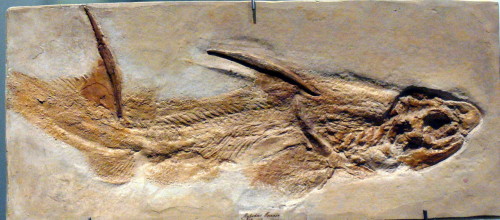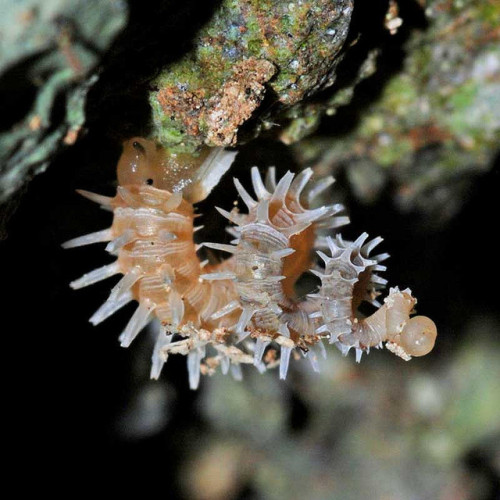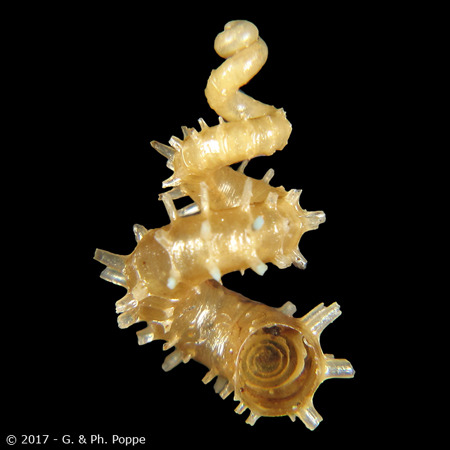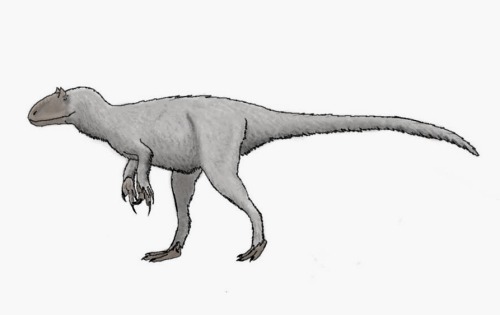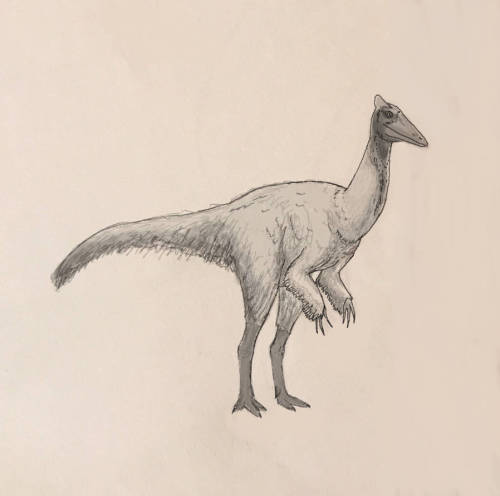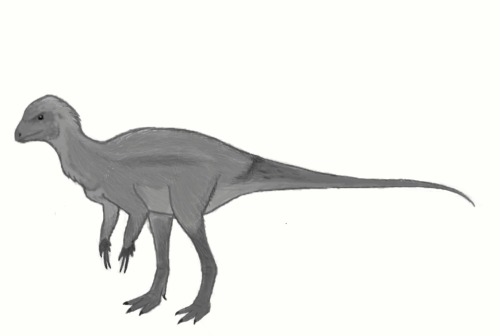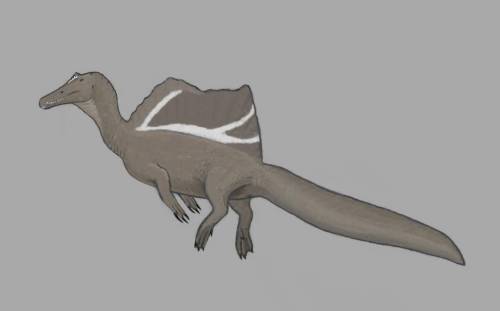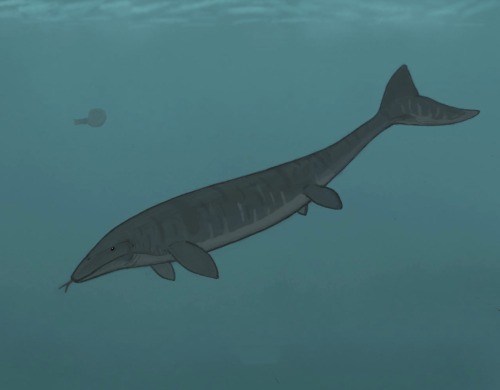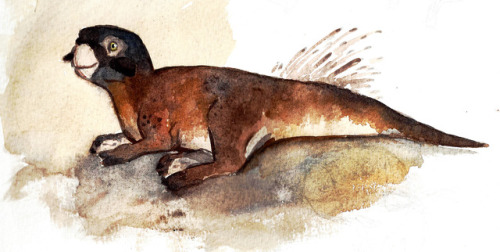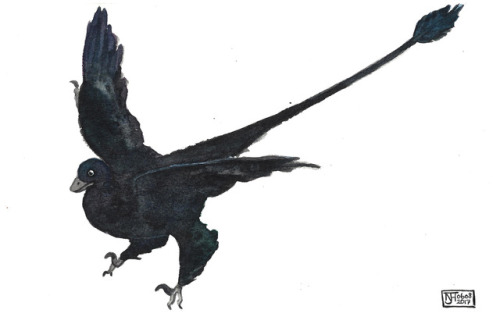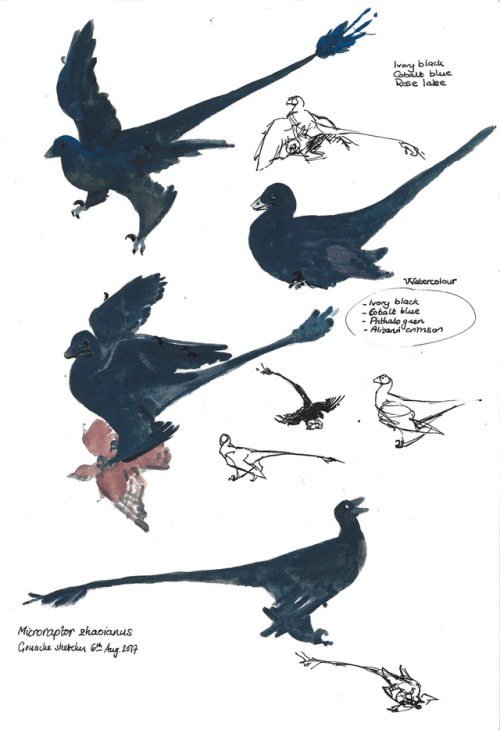#mesozoic

Dinosunday
Kosmoceratops
Temporal range: Late Cretaceous, 76.4-75.9 Ma
Location: North America
Diet: Herbivore
Family: Ceratops
Complete Mesozoic World Map Series (old cartography style)
These maps are inspired in old cartopgraphy, presenting the animals that lived at that time in a stylized way, just as a medieval artists would had drawn them.
this artwork is available fopr prints, t-shirts and much more here
find me on Instagram: @mariolanzarensis
Post link

PART 1:
https://zobiez.tumblr.com/post/679558795075239936
I FINALLY finished part 1 of the Evolution of Life poster that I was doing for my class-
It was originally supposed to be in color pencil
However, I think I will redraw it traditionally as a side project
My problem with this is that some of the animals in this poster look way too similar to the references I used and that bothers me
Throws off the consistency
Idk man I really want to redraw it the way it was intended one day
Without worrying about a deadline
Take it anyway- this took so long lmao
Saurodon - a sword eel
Mounted reconstruction on display at the Rocky Mountain Dinosaur Resource Center, Woodland Park, Colorado
Reconstruction by Charles Bonner
When: Cretaceous (~ 89 - 83 million years ago)
Where: North America
What:Saurodon is one of the large fish which swam though the Cretaceous Seaway, the marine waters that covered much of North America during the late Mesozoic. This particular species was ‘only’ about 8.5 feet (~2.6 meters) long, with a relatively skinny body and large pointed lower jaw. These features are what gives the family Saurodontidae the nick-name 'sword eels’. The Saurodontidae fall into the later group Ichthyodectidae, a completely extinct clade that contains some of the largest fish on record. Today the living relatives of these gigantic fishes are in the clade Osteoglossomorpha and are some of the largest bony fish that swim though today’s waters.
This was not a very specious group - there are only three described species - but they have been known to science for almost two-hundred years. The first Saurodontidaewas named in 1824 by Richard Harlan (the discover of Harlan’s ground sloth) - but was misidentified as the jaw of an extinct marine reptile. This was corrected only six years later when the first Saurodon specimen was found, and it was clear that the fragmentary specimen which was previously named belonged to a large fish, not a marine reptile. The use of the long lower jaw in Saurodon and its kin is not well understood, but it has been hypothesized that perhaps these predatory fish dug prey out from the deep muds at the bottom of the seaway.
Post link
Kronosaurus
Mounted specimen on display at Harvard Museum of Natural History
Reconstruction by Jaime Chirinos
When: Cretaceous (~ 125 - 99 million years ago)
Where: Australia
What:Kronosaurus is an australian plesiosaur. Yes, it is a plesiosaur even though it lacks the long neck that many people associated with the group. Plesiosauria is roughly divided into two groups; Plesiosauroidea - the long necked forms and Pliosauroidea - the short necked forms. Kronosaurus is an example of the latter clade, and shows many of the defining features of this group - such as an enormous head with massive jaws, a short neck, and a relatively short tail- the opposite in many ways of their cousins the plesiosauroids. This australian sea monster was one of the largest of its clade, with estimates of up to 33 feet long (~10 meters). Its teeth reach almost 5 inches (~12 cm ) long in crown length - the part above the gumline. The total tooth would have been over double in size. The large size of its teeth, combined with distinct shape and the lack of clear cutting surfaces also for their easy identification if they are found as isolated material.
The Kronosaurusspecimen seen above was found in on private property in central Queensland, Australia in the 1920s. A crew from Harvard was shown where the specimen was weathering out, and set about excavating the fossil. After years of work, the specimen was boxed up into over 80 crates, weighing in at over 6 tons and shipped to the states, where it was mounted at the Harvard museum. Decades later the original discoverer of the material finally got the see the results of the preparation and mounting of what he termed ‘his dinosaur’ at the age of 93. In life Kronosaurus was a top predator; there are fossils of Elasmosauridae plesiosaurs that show bite wounds that could have come from Kronosaurus! No fish for this animal, it was after much bigger prey, leading to amazing plesiosaur vs plesiosaur encounters. Or so I like to imagine!
Post link
Europasaurus
Reconstruction by Gerhard Boeggemann
When: Jurassic (~ 156 - 151 million years ago)
Where: Germany
What:Europasaurus is the smallest sauropod known. Now remember I said smallest SAUROPOD known, so we are still looking at an animal that was about 20 feet (~6 meters) long. Keep in mind though, this includes the long neck and tail - taking those out of the picture and the animal’s body length was about 6.5 feet (~ 2 meters). This length, coupled with the shoulder height of Europasaurus ( about 5 feet [~1.5 meters]), gives us a sauropod with a body that was about the size of a modern elephant. There are a number of proposed tiny sauropods out there, but I have selected Europasaurus as it is known from several almost complete skeletons, from juveniles to adults, so we can be sure this is not just a baby sauropod that would have grown much larger. Above I have included a diagram from the original description of Europasaurus rather than a reconstructed mounted skeleton to show you just how much of the skeleton is known. Why is Europasaurus so small? Its our good friend Island Dwarfism back again! The specimens have been found in Germany, on what would have been one of many islands in the area during the late Jurassic, owing to the higher sea levels.
This smallest of all sauropods is in the clade Macranaria within the sauropod family tree. This group actually contains some of the biggest sauropods (and thus dinosuars) ever known! Talk about some size diversity within a group! An adult Europasaurus could have easily walked between the legs of some of its larger cousins. The great range of ages in the recovered specimens of Europasaurushave allowed for detailed study of the microstructure of the bones, revealing how these animals grew. From this study it has been proposed that Europasaurus managed to stay small on its restricted island habitat by not stopping its growth exceptionally earlier than its relatives, but instead by dramatically slowing down its growth rate.
I hope this cute little sauropod makes up for ruining all of those childhoods with the reality (or should I say unreality) of Brontosaurus a few posts ago. ;)
Post link
Saurosuchus
Mounted specimen from Ischigualasto Provincial Park, San Juan, Argentina
Reconstructed model from the Titanes de Ischigualasto (Titans of Ischigualasto) exhibit while at the Museo Argentino de Ciencias Naturales in Buenos Aires, Argentina.
When: Late Triassic (~231 to 226 million years ago)
Where: Argentina
What: Saurosuchus is a very large basal member of the crocodile lineage within the Archosauria. It lived in what is now Argentina during the late Triassic, where it was a dominante apex predator, reaching lengths of up to 23 feet (~7 meters). A good deal of this length was its massive skull filled with pointy recurving teeth. Saurosuchus is a member of the Rauisuchia, one of the first branches to come off of the Crurotarsi (crocodile line archosaurs) lineage. Like other rauisuchians Saurosuchus had an erect leg posture, you can see this in the model above, it looks very much like a large crocodile (albiet with more dinosaur looking like head on), but its legs are directly underneath its body, not sprawling out like in modern crocodiles. This posture is the same as in mammals and dinosaurs, but was accomplished in a different way. Mammals and dinosaurs modify the femur itself for erect posture, but in rauisuchians it was the pelvis that was transformed. Saurosuchus was a fully terrestrial creature capable of fast speeds as it hunted its prey (including the much smaller dinosaurs) in the ancient flood plane.
Saurosuchus fossils are from the Ischigualasto formation (and national park!) in Argentina. This area is open to the public and is more popularly called the Valle de la Luna (Valley of the Moon). Not only do basal crocodile line archosaurs come from this formation, but some of the oldest dinosaurs as well. These animals, which would go on to dominate later in the Mesozoic, were a minor part of the fauna. The Triassic here was dominated by rhynchosaurs andcynodonts, these groups would both suffer great losses during the end Triassic extinction event.
Post link
Koskinonodon formerly known as Buettneria
Mounted specimen on display at the American Museum of Natural History
Reconstruction by Matt Celeskey
When: Triassic (~228 - 216 million years ago)
Where: North America
What: Koskinonodonis one of the later surviving of the giant amphibians. This beast could read up to 10 feet (~ 3 meters) long and was very common in the ancient American southwest. Koskinonodon was known by the name Buettneria for over 80 years, until a long standing nomenclature problem was resovled. See, the name Buettneria was applied to this animal in honor of W. H. Buettner, a fossil collector in the first part of the 20th century. This was in 1922, however, a living species of katydid was given the genus name of Buettneria decades earlier in 1889. Thus the name was not actually availble to be used for this giant amphibian. The name Koskinonodon was applied in 2007. This name was used because a specimen that was named Koskinonodon in 1929 was later determined to belong to the same genus as the previously known specimens that were then called Buettneria. When a genus is renamed this is typically how it is done, you comb though the past literature and use the oldest available name that has ever been used for any species (or specimens!) now housed in that genus. Sadly sometimes you end up using names that are just not as cool as the original. Sorry W. H. Buettner. At least your namesake fossil lives on in outdated museum exhibits. ;)
Koskinonodon is closely related to another large amphibian I have posted, Metoposaurus. It is likely that these two animals occupied the same habitates in life. What differentiates them? At just the general morphology level Koskinonodon has a much longer skull, a longer tail, and less robust limbs. It is common that when a paleo environment is reconstructed just one example of each ‘type’ of animal is used, but this is not really realistic. Think about the average North American forest today. Multiple species of all sorts of 'types’ of animals are found there, multiple squirrels, deers, and birds that resemble each other very closely but are distinct species. This is how it was in the Mesozoic world as well!
Post link
Dinodontosaurus
Mounted specimen on display at the Harvard Museum of Natural History
Reconstruction by Dmitry Bogdanov
When: Triassic (242 - 230 million years ago)
Where: Worldwide
What:Dinodontosaurus is a synapsid, or ‘mammal like reptile’. It was one of the most common large herbivorous animals in the mid Triassic. These beasts reached lengths of 8 feet (2.4 meters) and are estimated to have weighed hundres of pounds. They fall within the clade Dicynodontia, so named for their two large front teeth. A fossil find in Brazil of over 10 Dinodontosaurus, including juveniles, shows these animals lived in herds and cared for their young.
Synapsids were extremtly common in the Permian, but were hit hard by the end Permian extinction. Some groups, such as the Dicynodonts exemplified by Dinodontosaurus, however, made it though the extinction just fine. The extinction at the end of the Triassic period, however, was brutal to this clade, wiping out the vast majority of species. Some dicynodonts made it though this extinction, but the clade continued to dwindle throughout the rest of the Mesozoic, with the last dicynodont vanishing in the mid Cretaceous. In the synapsid family tree dicynodonts are fairly far up there, falling far closer to gorgonopsids than to the basal “pelycosaurs”.
Post link
Saichania
Mounted specimen on display at Dinosaur Kingdom, in Nakasato, Japan
Reconstruction by Andrey Atuchin
When: Late Cretaceous (~83 to 70 million years ago)
Where: Mongolia
What:Saichania was an armored plant eating dinosaur that roamed the deserts of Mongolia in the late Cretaceous. It was about 22 ft (~6 meters) long and heavily built. It was more fearsome looking than most armored dinosaurs as it did not just have flat armor plates on its body, but rather was covered with spikes. These dinosaurs were armored all over, there is even evidence of armored eyelids! This suit of armor would have protected Saichania from predators in the late Mesozoic mongolian desert. Fossils are typically found in deserts and badlands worldwide, but typically these areas were very different environments when the species represented by the fossils were alive. The ancient Gobi Desert was much closer to the harsh modern environment than most. Saichania was well adapted for desert life, with its stocky body and teeth designed for grinding the toughest of the desert plants.
Saichania falls within Ankylosauridae, a group of armored dinosaurs found almost worldwide. It is one of the last and most derived of the ankylosaurids. One good way to differentiate the deserved ankylosaurids from their armored close relatives is the presence of a tail club. Saichania did not have the most massive club known, but it was still a significant feature. Ankylosaurids were one of the dinosaur groups that made it right up to the end of the Cretaceous period, vanishing with the rest of the non-avian dinosaurs.
Post link
Hybodus
Fossil specimen from the Museum für Naturkunde in Berlin, Germany
Model by Dan Erickson and on display at the American Museum of Natural History
When: Permian to Cretaceous (260 to 80 million years ago)
Where: World Wide
What:Hybodus is a very wide spread, both temporally and geographically, fossil shark. I will be upfront here and say that I may be grossly over representing its temporal range, the literature is rather confusing and there have been a number of species going in and out of Hybodus over the years. So you may want to consider this an article on hybodontiform sharks in general, rather than just the one genus. Shark fossils are fairly rare in the fossil record when compared to other fish because sharks do not ossified their skeleton. However, Hybodus and its kin can be identified from fragmentary remains by their distintive teeth (two kinds in their jaws, both flat and pointy) and their ossified dorsal spines. These spines can be easily seen on both the fossil and the model above, they were most likely involved with stabilization of Hybodus as it swam. The relatively few full body specimens preserved complete the picture, showing us that Hybodus was a streamlined shark with a very heavy ribcage compared to most sharks, and that the males had not only ventral claspers, as seen in modern sharks, but also a series of spines on the side of the head - which are depicted above.
Hybodontiform sharks were the dominate group of sharks in the Jurassic period, and were even very common in the late Cretaceous after modern sharks had originated and diversified. Studies of this archaic shark clade have shown they were most likely over all slow swimmers, but they could enjoy brief bursts of speed if needed. The diverse teeth forms of hybodont sharks imply they did not just eat fish, but also were able to prey on hard shelled invertebrates. In the shark family tree Hybodontiformes is the first group outside of Neoselachii - the clade that contains all living sharks and rays.
Post link
Rutiodon
Mounted specimen on display at the American Museum of Natural History, NYC
Model on display at Dinosaur State Park, Connecticut
When: Late Triassic (~ 230 to 204 million years ago)
Where: North America
What:Rutiodon is a phytosaur. We have looked at another phytosaur before, Redondasaurus, which was one of the biggest and most derived of the phytosaurs. Rutiodon falls on the other end of the phytosaur family tree. Rutidon was about half (~25 feet/7.5 meters) as long as Redondasaurus, but as it was built so much more slenderly, it is more accurate to say it is only 1/3rd or even ¼th the size of its gigantic relative. This different body construction naturally translated into a different mode of life in Rutidon. Notice how slender and long its snout is? Some modern crocodiles have this same style of snout and they are predominately fish eaters, thus it is likely that Rutidon was as well, and it did not prey on terrestrial vertebrates.
Phytosaurs strongly resemble modern crocodiles in other ways, and Rutiodon looks even more like a crocodile than many others of its kin. But this animal is most assuradly a phytosaur, /not/ a crocodile. One easy way to tell is if you look at the front end of its snout, look how the upper jaw is bent? That is a clear phytosaur feature. Another thing to look for is the position of the nose holes. Rutiodon has the phytosaur position of back near the top of its skull - whereas crocodiles have them in the more typically place at the end of the snout.
Minor side trivia about this particular specimen of Rutiodon. It is number FR:AMNH 1, this means it was the first specimen to be catalogue into the fossil reptile collection. This specimen comes from a coal mine in Chatham County, North Carolina, and was collected by the famous paleontologist William Diller Matthew in 1895.
Post link
Laelaps saltando (atualmente, Dryptosaurus aquilunguis).
LeapingLaelaps (now known as Dryptosaurus aquilunguis).
Charles R. Knight, 1896.
Post link

Out of the Blue: How Animals Evolved from Prehistoric Seas final spread
By Elizabeth Shreeve and illustrated by Frann Preston-Gannon
Cuban Land Snails-Blaesospira echinus
Blaesospira is a genus of land snails with an operculum, terrestrial gastropod mollusks in the family Pomatiidae. This is a land snail species endemic to Cuba.
Unbelievable–they’re ammonites!
Post link
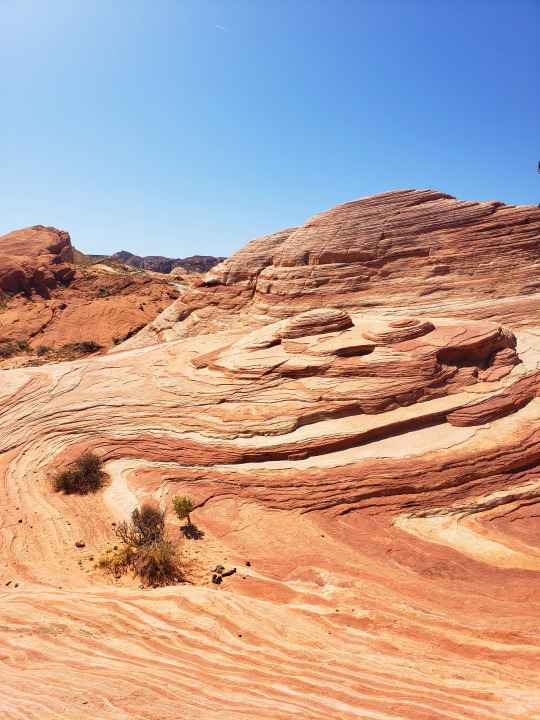
Sandstone dates to the Early Jurassic when the American West was covered in an ancient, flat desert. The elegant striations in the sediment are the result of the original deposition of the sand dunes, which were later exposed by erosion.

FossilFriday: Stenopterygius, an ichthyosaur from the Jurassic of Germany
Once and Future Giants
The sauropodomorph PanphagiastartlesIschigualastia.
Ischigualasto, Argentina, Late Triassic.
Post link


